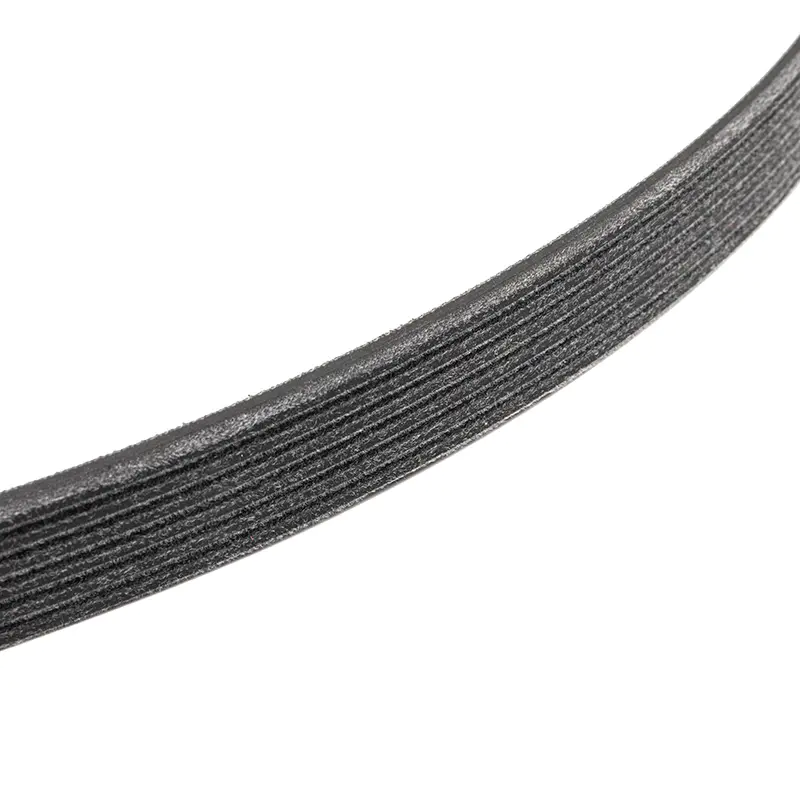Humidity: High humidity levels can adversely affect CR rubber V-ribbed belts by promoting moisture absorption. Rubber, including CR rubber, is hygroscopic, meaning it can absorb water from the atmosphere. This moisture absorption causes the rubber to swell, which can lead to dimensional changes in the belt. As the belt swells, it may no longer fit properly within the pulley system, leading to misalignment and increased friction. Moisture can act as a catalyst for chemical degradation processes within the rubber, accelerating its aging and reducing its mechanical strength over time. Humid conditions can facilitate the penetration of contaminants such as dust and dirt into the belt material, further compromising its integrity and performance.
Exposure to Sunlight (UV Radiation): CR rubber V-ribbed belts are vulnerable to degradation from exposure to ultraviolet (UV) radiation in sunlight. UV rays initiate chemical reactions within the rubber polymer, primarily oxidative processes that break down the molecular structure of the rubber. This degradation manifests as surface cracking, known as weather cracking, which reduces the belt's flexibility and tensile strength. UV degradation is more pronounced in belts used in outdoor or exposed applications where they are subject to continuous sunlight exposure. To mitigate UV degradation, CR rubber formulations often incorporate UV stabilizers and antioxidants. These additives absorb or neutralize the harmful effects of UV radiation, extending the belt's service life and maintaining its mechanical properties over time.
Temperature Fluctuations: Temperature fluctuations, especially when combined with sunlight exposure, can accelerate the degradation of CR rubber V-ribbed belts. Rubber materials expand and contract with changes in temperature, which induces mechanical stresses within the belt structure. Rapid thermal cycling can lead to fatigue failure, where repeated expansion and contraction weaken the rubber material, ultimately causing it to crack and fail prematurely. Temperature extremes can promote chemical reactions within the rubber, such as oxidation and cross-linking, which further degrade its mechanical properties. Proper selection of CR rubber formulations with thermal stabilizers is crucial to mitigate the effects of temperature fluctuations and ensure consistent performance across a wide range of operating conditions.
Ozone Exposure: Ozone (O3), present in the atmosphere, poses a significant threat to CR rubber V-ribbed belts, particularly in urban and industrial environments where ozone levels are higher. Ozone exposure causes oxidative degradation of the rubber surface, leading to the formation of surface cracks known as ozone cracking. These cracks typically develop perpendicular to the direction of stress, such as at belt flex points or near pulley grooves. Ozone degradation is accelerated in the presence of heat and humidity, exacerbating its harmful effects on the rubber material. We address this challenge by incorporating anti-ozone waxes and protective coatings into the CR rubber compound. These additives scavenge ozone molecules and inhibit their ability to penetrate and degrade the rubber, thereby preserving the belt's structural integrity and prolonging its service life.




 English
English 中文简体
中文简体

 View More >>
View More >> View More >>
View More >> View More >>
View More >> View More >>
View More >> View More >>
View More >> View More >>
View More >> View More >>
View More >> View More >>
View More >> View More >>
View More >> View More >>
View More >> View More >>
View More >> View More >>
View More >>
